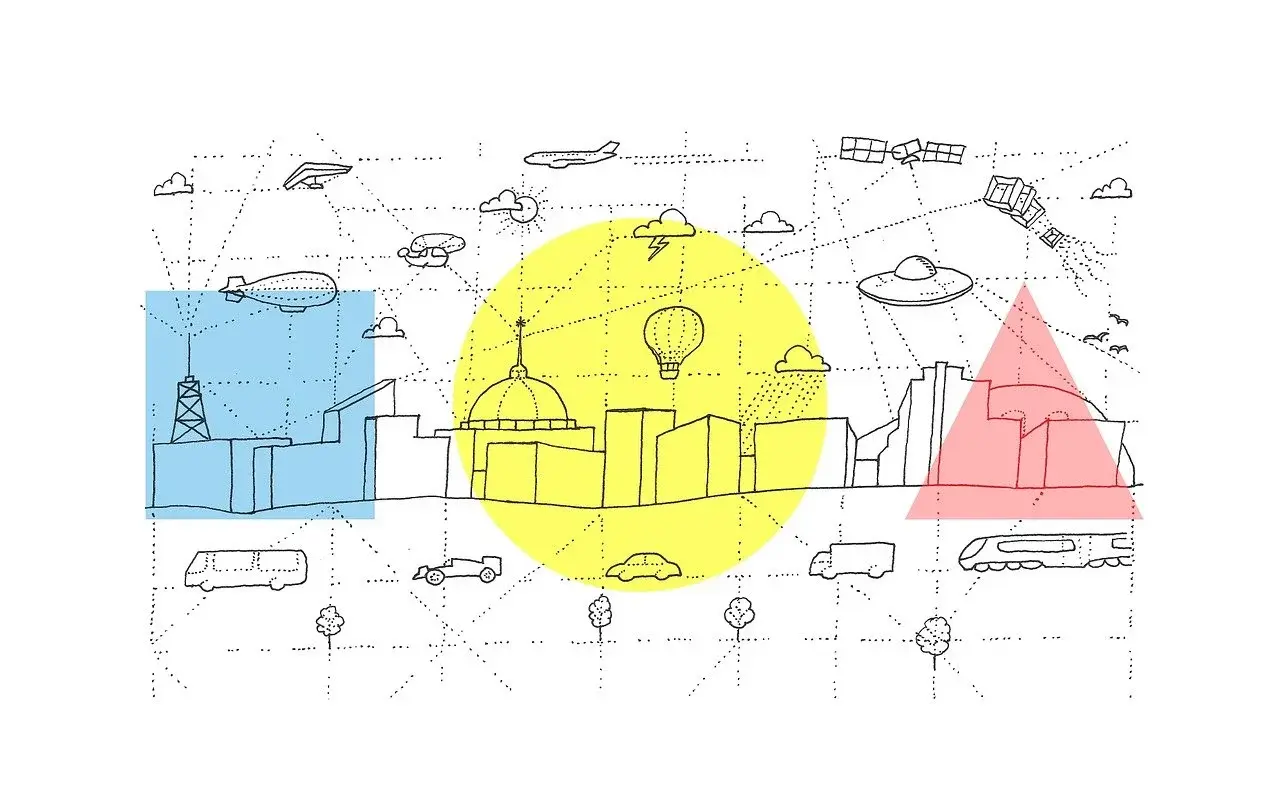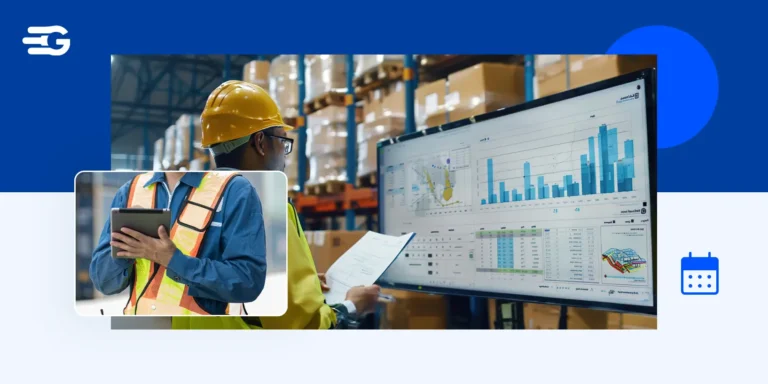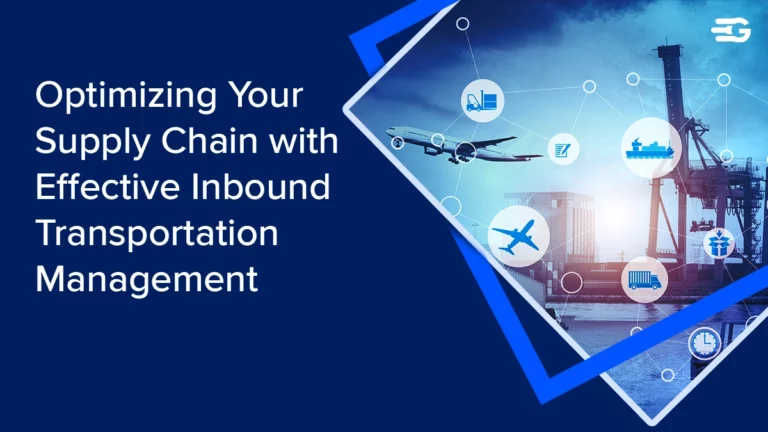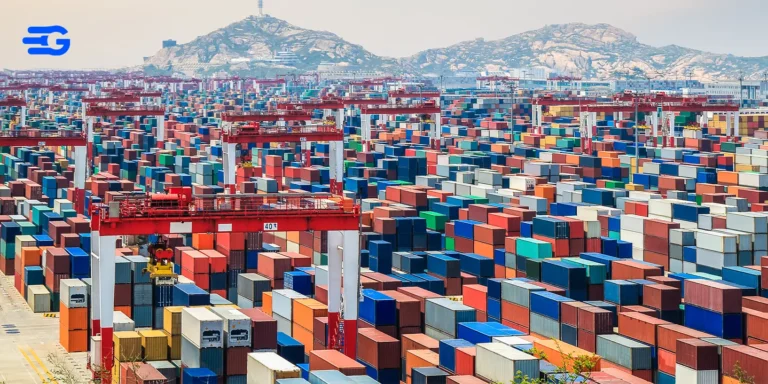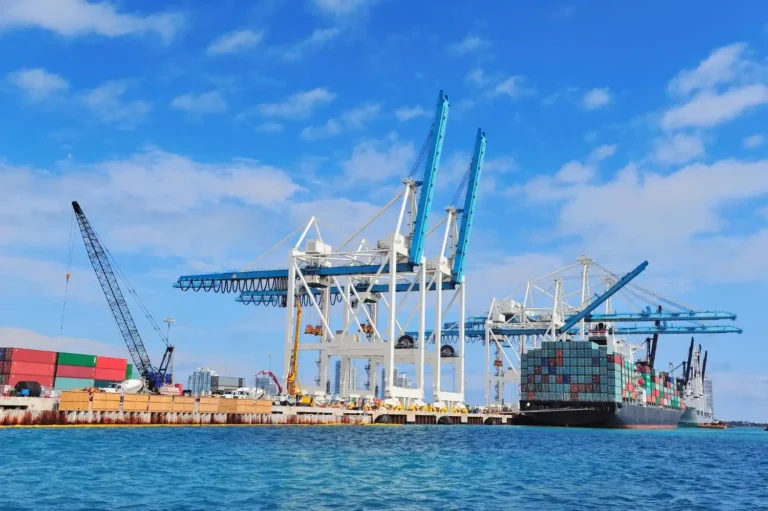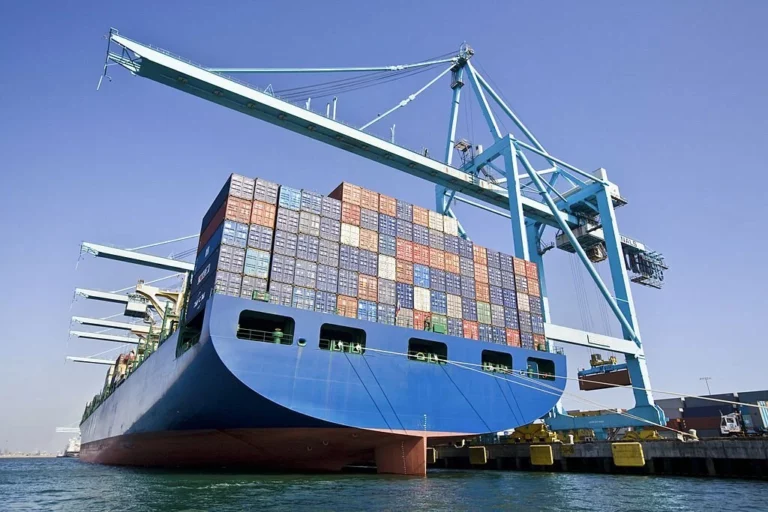Exploring Modes of Transportation: Navigating Through Land, Water, and Air
Ever wondered how that coffee mug you ordered online ended up in your kitchen?
Modern economies of the 21st century run on trade of goods and services. As the internet and technology have skimmed the distances between us, the intricate process of how exactly an item travels from factories to store shelves into your hands remains unnoticed.
Supply chain transportation is the invisible force behind everything we buy. We’re talking trucks rumbling down highways, massive ships gliding across oceans, and airplanes streaking through the sky. These are the constantly moving elements of global trade that move goods around the world, keeping the global economy humming.
Let’s explore the land, water, and air – the three key modes of modern transportation as we uncover the ingenious ways products travel vast distances, from busy roads to calming seas and open skies.
Importance
Transportation is indispensable for global connectivity and commerce, linking producers, consumers, and markets worldwide. The diverse modes of transportation, including land, water, and air, form an integrated network that drives economic development, enhances competitiveness, and fosters international cooperation. As the world continues to evolve, the importance of transportation in enabling trade, mobility, and prosperity will only grow, making it essential to invest in modern, efficient, and sustainable transportation systems.
Land transportation, including railways, roadways, and pipelines, forms the foundation of terrestrial connectivity. Railways enable the rapid movement of freight and passengers over long distances, contributing to the development of trade corridors and economic integration. Roadways, on the other hand, provide last-mile connectivity, reaching remote areas inaccessible by other means and supporting the distribution of goods to local markets.
Water transportation, comprising maritime and inland waterways, connects continents, countries, and regions through a network of ports, canals, and navigable rivers. Maritime shipping is the backbone of global trade, accounting for the majority of goods transported internationally.
Ports serve as critical nodes in the global logistics network, facilitating the loading, unloading, and transshipment of cargo between ships and other modes of transportation. Inland waterways, including rivers and canals, provide cost-effective and environmentally friendly transportation options for bulk commodities and oversized cargo.
Air transportation revolutionized global connectivity, enabling rapid and efficient movement of passengers and high-value goods across continents and oceans. Commercial airlines operate a vast network of routes, connecting major cities and remote destinations, thereby facilitating tourism, business travel, and emergency response. Air cargo plays a vital role in the global economy, transporting perishable goods, pharmaceuticals, and electronics with speed and reliability.
Each mode of transportation has its significance in fostering economic development, enhancing accessibility, and promoting trade.
Firstly, efficient transportation systems reduce the logistic costs further reflecting on the costs of production and distribution, enabling businesses to access raw materials, intermediate goods, and markets more affordably. This cost reduction translates into lower prices for consumers, stimulating demand and consumption.
Additionally, transportation infrastructure investments create jobs and generate economic activity in construction, maintenance, and operation, contributing to employment and income growth.
Furthermore, transportation enhances market efficiency by connecting producers with consumers and facilitating the exchange of goods and services. Transportation infrastructure catalyzes regional development, attracting investment, promoting urbanization, and creating opportunities for businesses and individuals.
Land Transportation
Road Transport
Road transport is renowned for its unparalleled flexibility and accessibility, making it the backbone of transportation networks worldwide. Its ability to navigate through diverse terrains and reach remote locations makes road transport indispensable for connecting communities and facilitating trade.
One of its primary advantages lies in its suitability for short distances, allowing for swift and direct delivery of goods to local markets and consumers. Moreover, road transport offers a cost-effective solution for transporting small quantities of goods, serving the needs of businesses and individuals alike.
However, road transport also poses significant environmental and safety considerations. The reliance on fossil fuels for powering vehicles contributes to air pollution and greenhouse gas emissions, exacerbating environmental concerns such as climate change and urban air quality. Additionally, road accidents and fatalities remain a major challenge, necessitating continuous efforts to enhance road safety through improved infrastructure, vehicle standards, and driver training programs.
Rail Transport
Rail transport stands out for its efficiency in transporting goods over long distances, offering a cost-effective and reliable solution for bulk cargo movement. Its dedicated infrastructure, including railways and terminals, enables seamless transportation of heavy and bulky goods, such as raw materials, commodities, and industrial equipment.
By leveraging economies of scale, rail transport can accommodate large volumes of freight, making it an efficient mode for long-haul shipments.
Despite its efficiency, rail transport also comes with associated costs and limitations. The initial investment required for constructing and maintaining railway infrastructure can be substantial, posing financial challenges for governments and private operators.
Moreover, rail transport’s fixed routes and schedules may limit its flexibility compared to road transport, especially for last-mile delivery and transportation to remote areas. Additionally, the capacity constraints of rail networks and the need for intermodal connections can affect the overall reliability and competitiveness of rail transport in certain regions.
While road transport excels in flexibility and accessibility for short-distance travel, rail transport provides efficiency and cost-effectiveness for long-distance freight movement. However, addressing environmental concerns and enhancing safety measures shall remain an immediate concern for the future.
Water Transportation
Sea Freight
Sea freight is a cornerstone of global trade, offering a cost-effective and efficient solution for transporting goods over long distances. Its unparalleled capacity for heavy and high-volume cargo makes it indispensable for industries such as manufacturing, mining, and agriculture. By leveraging large container vessels and specialized shipping routes, sea freight can accommodate massive quantities of goods, including raw materials, finished products, and oversized equipment.
Furthermore, sea freight is renowned for its environmental friendliness compared to other modes of transportation. Modern container ships are designed to maximize fuel efficiency and minimize emissions, making sea freight a sustainable choice for businesses seeking to reduce their carbon footprint. Additionally, the use of intermodal containers facilitates seamless transfer between different modes of transportation, further enhancing the efficiency of sea freight logistics.
Ocean Containers and Freight Types
Ocean containers play a crucial role in facilitating sea freight operations, offering standardized and secure packaging for various types of cargo. The most common types of ocean containers include Standard containers, which are used for general cargo and dry goods, and Reefer containers, which are equipped with refrigeration systems for perishable goods such as food and pharmaceuticals. High-cube containers, with extra height compared to Standard containers, are ideal for transporting bulky or oversized cargo.
In addition to container types, sea freight logistics involve concepts such as Full Container Load (FCL) and Less than Container Load (LCL) shipping. FCL shipping entails booking an entire container for exclusive use, offering greater control and security for high-volume shipments. On the other hand, LCL shipping involves consolidating multiple smaller shipments into a single container, allowing businesses to share transportation costs and reduce expenses for smaller quantities of goods.
Overall, sea freight and ocean containers play pivotal roles in global supply chains, providing businesses with reliable and cost-effective solutions for transporting goods across continents. By harnessing the efficiency and capacity of sea freight, businesses can optimize their logistics operations and meet the demands of an increasingly interconnected world economy.
Air Transportation
Air Freight Advantages
Air transportation offers several distinct advantages for businesses looking to transport goods quickly and efficiently. One of the primary benefits of air freight is its unparalleled speed. Unlike other modes of transportation, such as sea or rail, air freight enables goods to reach their destination in a matter of hours or days, making it ideal for time-sensitive shipments.
Moreover, air freight plays a crucial role in transporting high-value goods, including electronics, pharmaceuticals, and perishable items. The security and reliability of air cargo operations ensure that valuable goods arrive at their destination safely and on time, minimizing the risk of theft, damage, or spoilage.
Despite its efficiency, air transportation does have environmental implications due to carbon emissions associated with aircraft operations. While modern aircraft are designed to be more fuel-efficient and environmentally friendly compared to older models, air freight still contributes to greenhouse gas emissions and air pollution. Businesses must weigh the benefits of air transportation against its environmental impact and consider sustainable and green practices to mitigate carbon emissions.
Emerging and Alternative Modes of Transportation
Pipeline Transportation
Pipeline transportation plays a vital role in moving liquids and gases efficiently from one location to another. Unlike other modes of transportation, such as trucks or trains, pipelines offer continuous operation capability, ensuring a steady flow of materials without interruptions.
Pipeline transportation has been particularly effective in several industries and regions. In the oil and gas sector, pipelines are used to transport crude oil, natural gas, and refined petroleum products over long distances, connecting production sites with refineries, distribution centers, and ultimately, consumers. Similarly, in the chemical industry, pipelines are utilized to transport various gases and liquids essential for manufacturing processes.
Challenges
However, pipeline transportation also presents certain challenges that require immediate attention. One significant challenge is ensuring the safety and integrity of pipelines to prevent leaks, spills, and environmental contamination. Aging infrastructure and inadequate maintenance practices can lead to pipeline failures, posing risks to human health, wildlife, and ecosystems. Additionally, the construction of new pipelines may face opposition from local communities and environmental activists concerned about land rights, indigenous rights, and the potential for accidents or pollution incidents.
To address these challenges, stakeholders must prioritize investment in pipeline infrastructure maintenance, inspection, and repair programs. Advanced technologies, such as leak detection systems and remote monitoring devices, can help identify potential issues early and prevent catastrophic failures. Furthermore, engaging with local communities and implementing robust environmental protection measures can mitigate the risks associated with pipeline construction and operation.
Modal Competition and Shift
The Dynamics of Modal Choice
Modal competition refers to the rivalry among different transportation modes, such as road, rail, air, and sea, for the movement of goods and passengers. The choice of transportation mode is influenced by a variety of factors, each playing a significant role in determining the most suitable option for a particular shipment.
- Cost is often a primary consideration in modal choice. Different modes have distinct cost structures, including capital expenses, operating costs, and associated fees. For example, while air transportation offers speed and efficiency, it tends to be more expensive compared to sea or rail transport, especially for large or heavy cargo. Conversely, sea freight may offer lower costs for bulk shipments but may be slower compared to air transport.
- Speed is another critical factor influencing modal choice, particularly for time-sensitive shipments. Air transportation is renowned for its speed, making it ideal for perishable goods or urgent deliveries. In contrast, sea or rail transport may take longer but can offer cost savings for non-time-sensitive cargo.
- Infrastructure availability and quality also play a significant role in modal choice. Different regions may have varying levels of infrastructure development for different transportation modes. For instance, regions with well-developed road networks may see higher road transport usage, while areas with extensive railway systems may favor rail transport.
The dynamics of modal choice have a profound impact on global trade patterns. Changes in modal preferences can lead to shifts in trade routes, market access, supply chain strategies, and visibility. Additionally, advancements in transportation technology and infrastructure can disrupt traditional modal hierarchies, creating new opportunities and challenges for businesses and industries.
Overall, understanding the dynamics of modal choice is essential for stakeholders involved in logistics, supply chain management, and international trade. By carefully evaluating factors such as cost, speed, and infrastructure, businesses can make informed decisions to optimize their transportation strategies and enhance their competitiveness in the global marketplace.
The Future of Transportation Modes
Innovations and Trends
As we look ahead to the future of transportation, it is evident that the landscape is evolving rapidly, driven by a confluence of factors such as sustainability imperatives, technological advancements, and the integration of intermodal solutions. One of the most transformative developments in recent years has been the emergence of Software as a Service (SaaS) logistics solutions, revolutionizing the way companies manage their supply chains and transportation operations.
SaaS logistics solutions offer a wide range of benefits, including real-time visibility, predictive analytics, and seamless collaboration among stakeholders. These cloud-based platforms enable businesses to optimize route planning, track shipments in transit, and respond dynamically to changing market conditions. Moreover, they facilitate better communication and coordination between shippers, carriers, and third-party logistics providers, streamlining the entire logistics process and driving efficiencies across the supply chain.
In this context, GoComet’s services have been at the forefront of innovation, leveraging cutting-edge technology to deliver comprehensive logistics solutions tailored to the needs of modern businesses. With features such as intelligent route optimization, demand forecasting, and environmental impact assessments, GoComet is helping companies reduce costs, minimize carbon emissions, and enhance overall operational efficiency.
Looking forward, the future of transportation modes will continue to be shaped by ongoing advancements in technology and a growing emphasis on sustainability. We can expect to see continued investments in electric and autonomous vehicles, the proliferation of smart infrastructure, and the adoption of alternative fuels to reduce carbon footprints. Intermodal solutions, combining multiple modes of transportation seamlessly, will also play a pivotal role in optimizing supply chain networks and reducing congestion on traditional routes.
Thus, the future of transportation modes holds immense promise, driven by innovations that prioritize sustainability, efficiency, and collaboration. By embracing emerging technologies and solutions like GoComet’s services, businesses can navigate the complexities of global logistics with agility and resilience, positioning themselves for success in an increasingly interconnected world.
